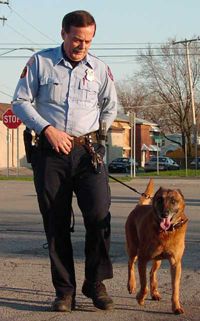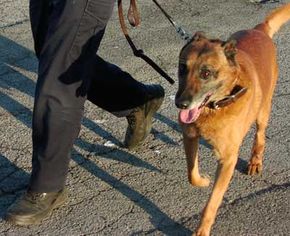Police Dog Basic Training
All police dogs must first become experts at basic obedience training. They must obey the commands of their handler without hesitation. This is what keeps the inherent aggression of the dog in check, and allows the officer to control how much force the dog is using against a suspect.

Dogs from Europe are often given commands in their native language (Breston's commands are all in Dutch). Many people think this is so no one besides the handler can accidentally give them an "attack" command in English. This is a myth. The real reason is much simpler -- the dogs were trained with those command words, and it's much easier for the officer to learn a few Dutch or German words than to retrain the dog with new commands.
Advertisement
A police dog must also make it through endurance and agility training. The dog must be able to jump over walls and climb stairs. Each dog is acclimated to city life, because a dog that's nervous around people won't make a good police dog.
Finally, each dog receives specialty training. Many dogs are trained to search for drugs, though some are bomb or gun sniffers. Police dogs can also track missing persons or suspects.
In the next section, you'll learn about the specialty training that produces a dog able to locate illegal drugs.
